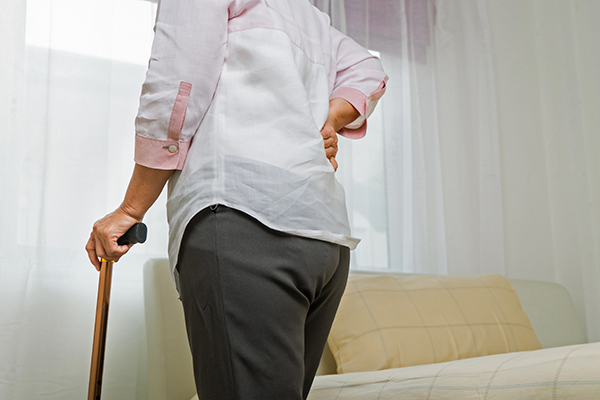Written by Steven Burns
From his column To Your Health
 I got the call on a Thursday morning. Immediately after that, I made another one.
I got the call on a Thursday morning. Immediately after that, I made another one.
When my patient answered the phone, I said, “John, where are you right now?” He said he was at home. I said, “I talked with the radiologist, and you have severe spinal stenosis in your neck at the C3 nerve level. I’d like to send an ambulance to your house to pick you up and take you to the hospital.” “Are you kidding? Can’t I just drive to the hospital?” “John, here’s the problem: if you have a car wreck, even a minor one, you may injure your neck, and, at that moment, you will stop breathing.” We negotiated for a while, and he agreed to drive, very carefully, to the emergency room at our local hospital. He made it okay. Thirty-six hours later, he had cervical spine decompression surgery.
John had walked into my office earlier that week and told me that with every step he felt “electric shocks” all the way down to his feet. He had also been stumbling and feeling weak for a while, hence the request for the MRI. On the phone, the radiologist had told me John only had three millimeters of space at the C3 level of his spine, meaning any further injury would totally paralyze him, and he would stop breathing, as the phrenic nerve (the one that causes the diaphragm to move) would cease working. He would die very quickly.
After the surgery and rehab, John improved rapidly. His strength returned, and he felt so much better.
Most of us adults have had back pain. Statistically, about 80% suffer from it at some time in their lives. However, the pain with spinal stenosis can be a quantum leap from that of routine lower back pain.
Spinal stenosis is a narrowing (stenosis) of the column that the spinal cord travels in. It can include narrowing of the spaces (foramen or foramina) through which the nerves exit the spinal cord to the muscles and other organs. Lumbar spinal stenosis is more common than cervical, with symptoms occurring in between 250,000 and 500,000 people in the United States. Many people have stenosis but never have symptoms, so the statistics are very imprecise. A study (Framingham) did CT scans of 191 individuals and found many of them had spinal stenosis, but that pain and numbness occurred mainly in those with severe stenosis. That would imply many of us have some degree of spinal stenosis but do not have pain, and some have pain but no stenosis.
Symptoms of spinal stenosis include pain, numbness (that can extend down the arms or legs), weakness, and, in some cases, loss of bowel or bladder control. Many who complain of sciatica or sciatic nerve pain are experiencing spinal stenosis, although this is not true for all of them. The pain is sometimes relieved by bending or leaning forward, while it is worsened by walking or running. For some, the pain that accompanies exercise (claudication) is similar to that which occurs when there is reduced blood flow, especially in the lower extremities. Most common symptoms include aching or burning pain, sometimes with numbness in the affected areas. There can also be weakness, including a condition called “drop foot,” which makes it hard to raise the toes off the ground. This problem often causes individuals to trip, as the foot tips forward when they walk.
Treatment for spinal stenosis is usually aimed at relieving the pain, not at changing the anatomy (surgery). Physical therapy can be effective for some, but it is usually not as effective as it is for muscular or arthritic back pain. Medications can help. These may include nonsteroidal anti-inflammatory drugs, muscle relaxers, anticonvulsants (such as gabapentin), and oral steroids. Use of opioid pain relievers may be a part of treatment, but the dangers of dependency or addiction can be very high. Also, anesthesiologists can place cortisone near nerve roots using an epidural injection technique. The cortisone reduces inflammation, which, in turn, relieves the pain, either temporarily or for an extended time. Other treatments include nerve ablation (burning the nerve roots with radio frequency energy), implantable nerve stimulators, implantable medication pumps (usually morphine), and back surgery.
The goals of treatment are to reduce pain and increase function. Stopping pain entirely is usually not a realistic goal, so managing it becomes the course of action.
If you think you have spinal stenosis, I recommend you start by talking with your primary care physician, who is best-suited to guide you through what can be a very difficult problem. He or she can call in specialists as needed to assist with your treatment.
Dr. Steven Burns, M.D., is board-certified in family medicine and has been in practice for more than 30 years. Opinions are his own.
